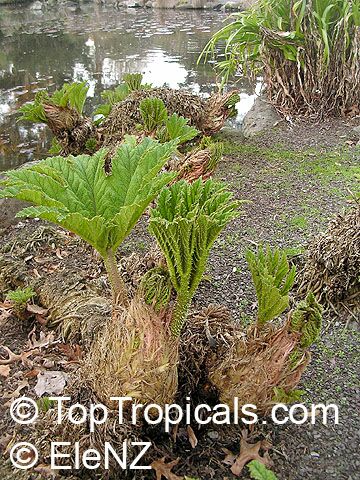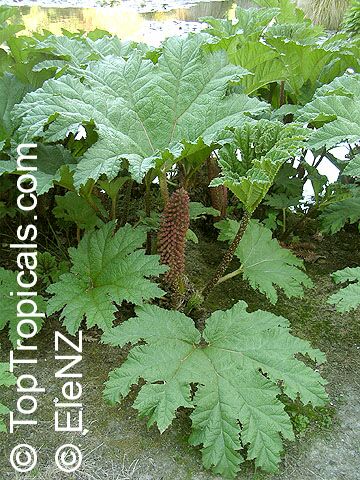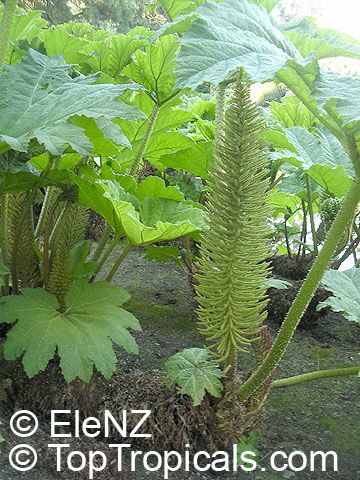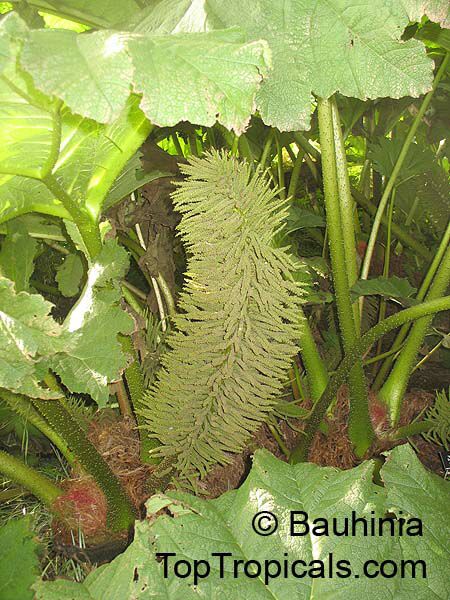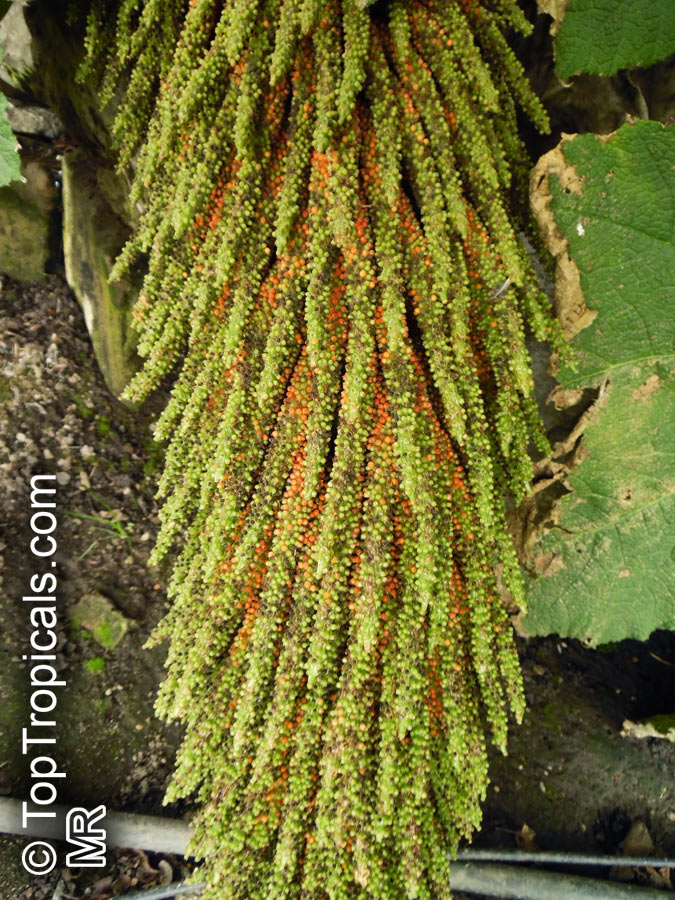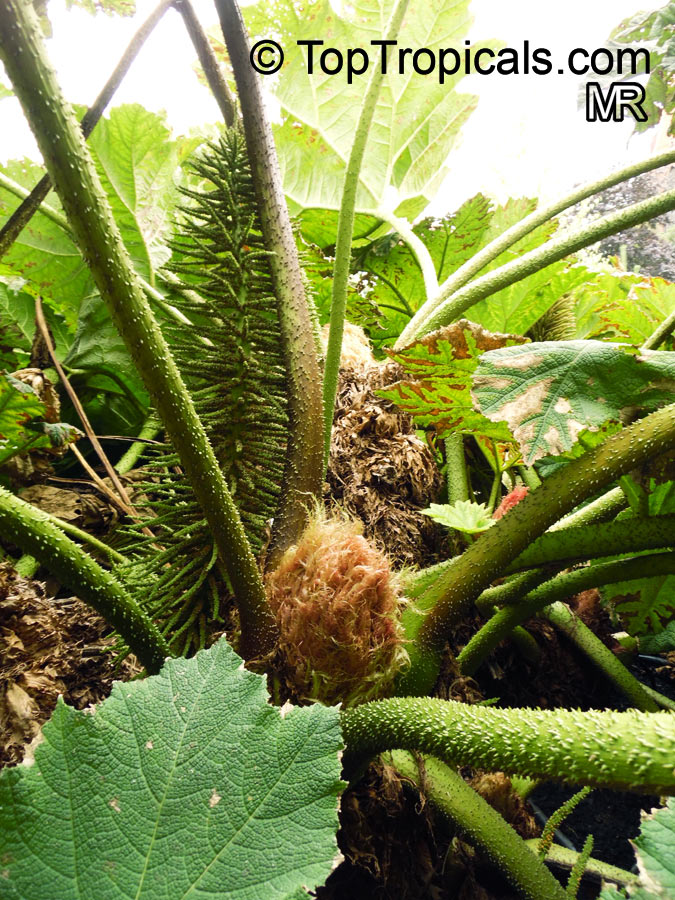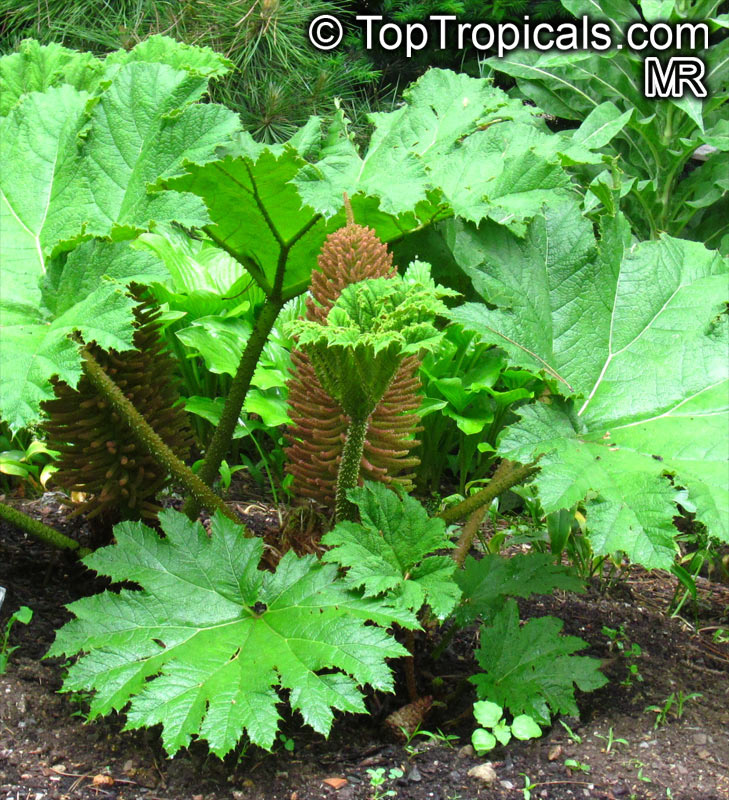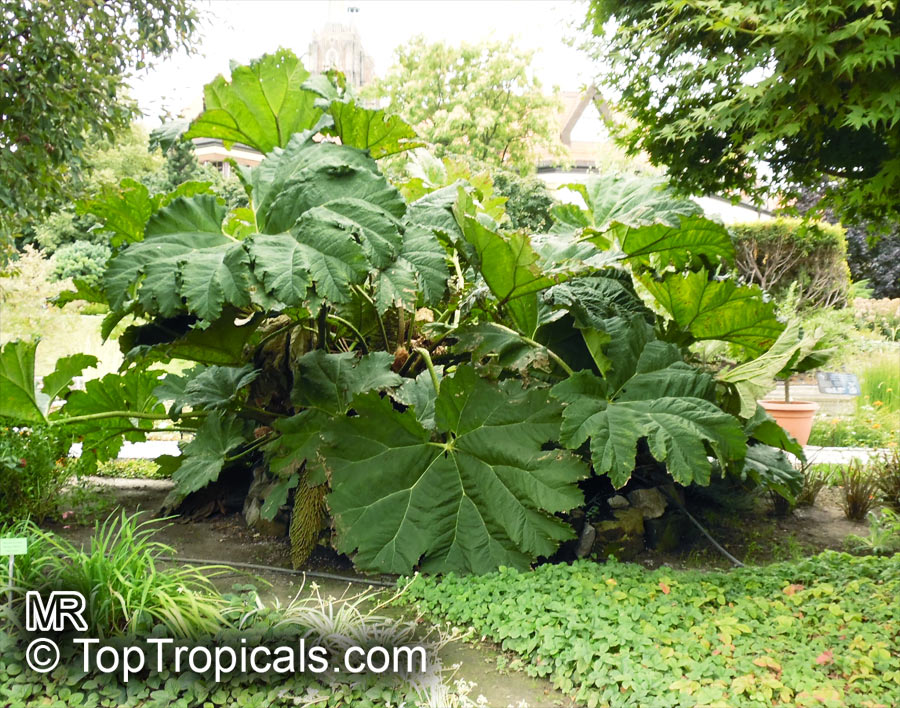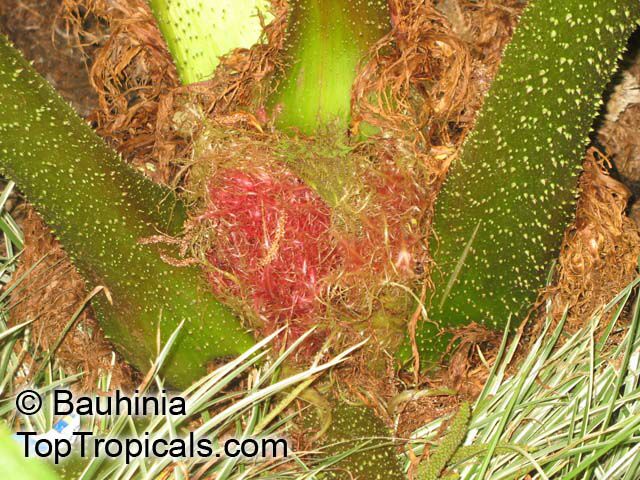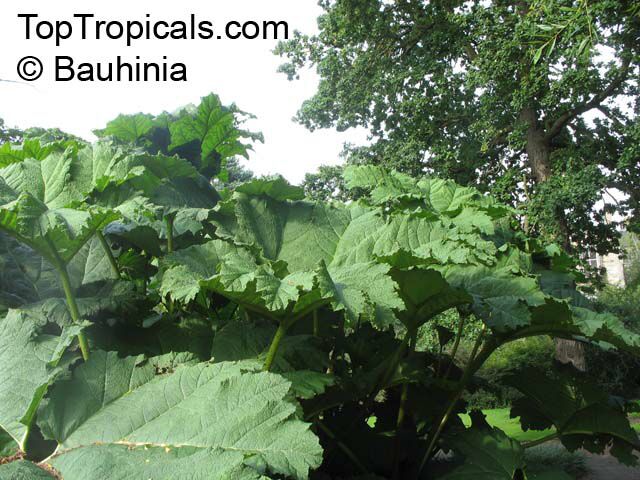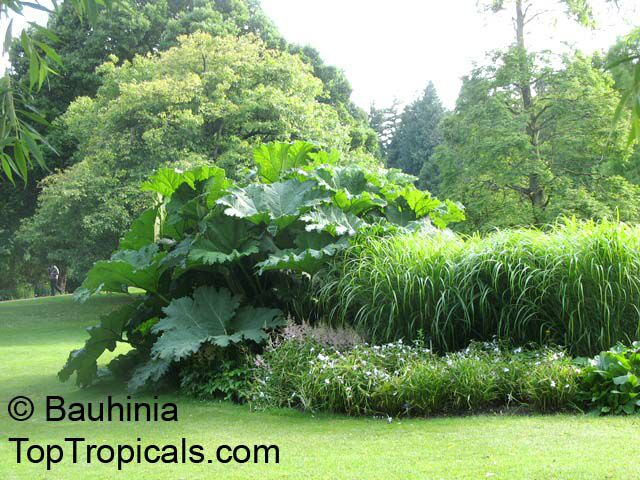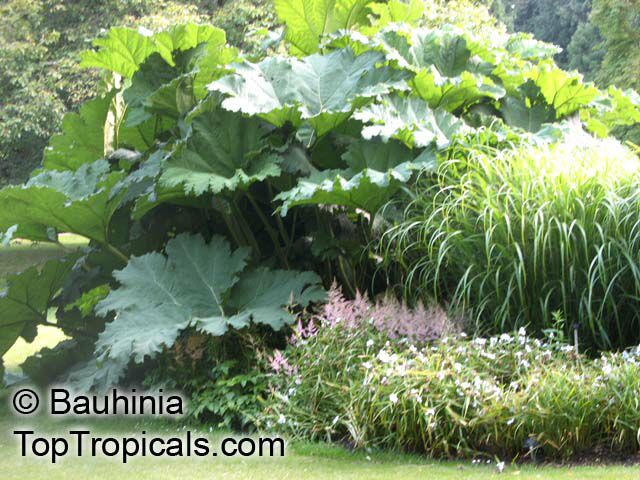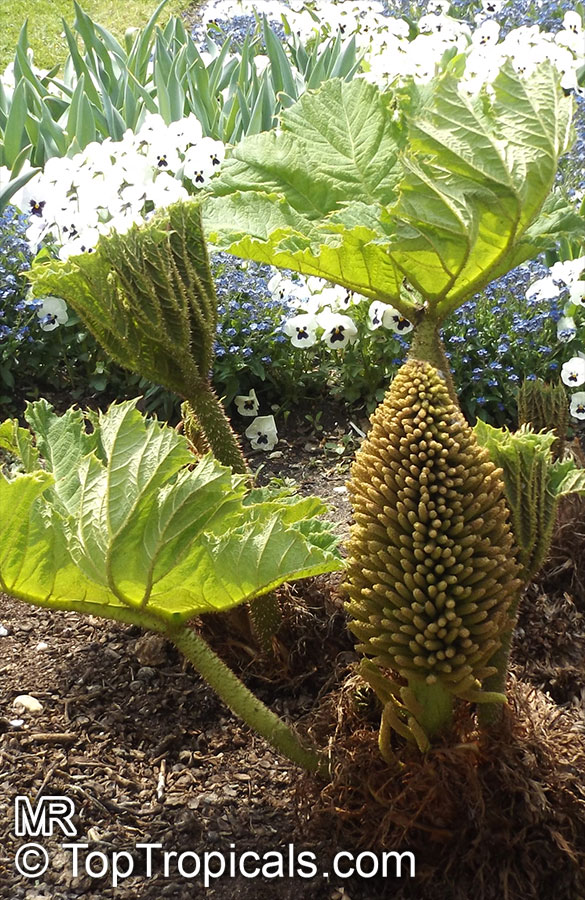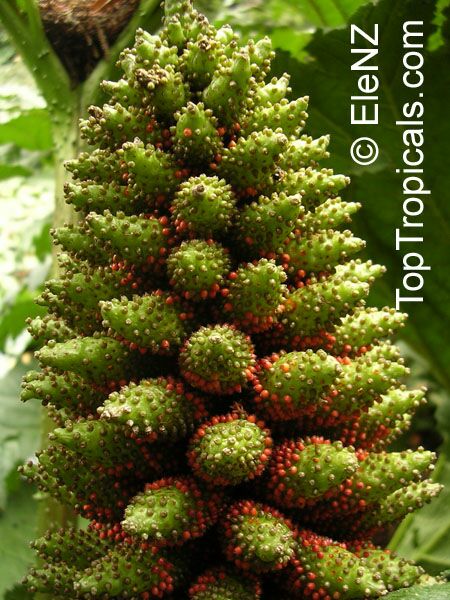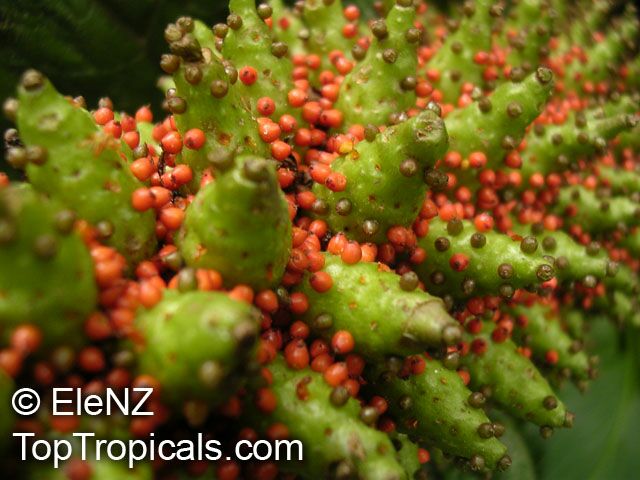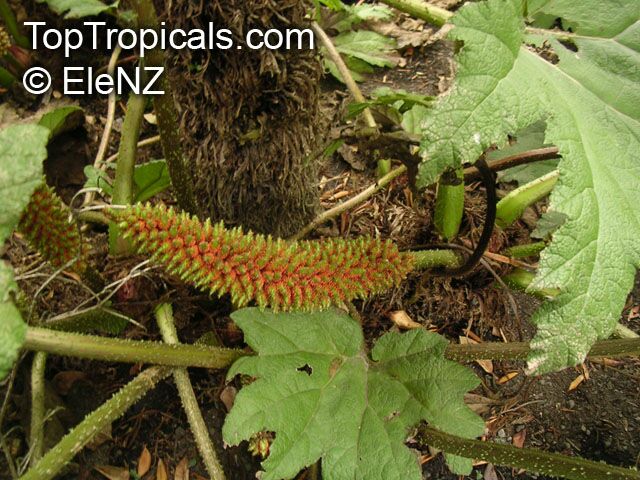Gunneraceae - Botanical Family
Top Tropicals Plant Encyclopedia
| Number of plants found: 2 |
Botanical name: Gunnera manicata
Common names: Giant Rhubarb, Giant Gunnera, Mammutblatt, Dinosaur Food Plant
Family: Gunneraceae
Origin: Brazil









Gunnera manicata is a spectacular, architectural herbaceous plant, commonly known as 'giant rhubarb'. These plants need plenty of space to grow in, as it can be difficult to control their size. In terms of planting these plants, they look best either as a feature plant in a damp, bog garden, or beside a large pond where the reflections of their umbrella-shaped leaves are visible. The fat growth buds clustered in its crown are prone to frost damage. Therefore, it is advisable to provide extra protection by piling a heavy mulch layer of dead leaves and stems over the plant during autumn. Gunnera manicata can be grown in almost any kind of soil, as long as it remains moist.
In terms of sun exposure, Gunnera manicata is tolerant of both full sun and semi-shade environments. It is relatively hardy, and can withstand temperatures as low as -17C (0F) with the help of a thick mulch layer. Furthermore, this plant is also saltwater resistant and can even handle temporary frost spells down to the 30's degree Fahrenheit (F). To keep the plant healthy, it should be watered at regular intervals, prune off old leaves and snip dead branches, as well as being fed with a fertilizer every month. With a bit of extra care, these plants can also survive in cooler climates and can even be kept in containers. When grown in the ideal environment, Gunnera manicata is quite a show-stopper and its large green leaves, ornate blooms, and contrasting red branch tips, attract attention and add to the overall aesthetic. It is also known to attract many birds and butterflies, making it a great addition to any garden.
Botanical names: Gunnera tinctoria, Gunnera chilensis
Common names: Chilean Rhubarb, Giant Rhubarb
Family: Gunneraceae
Origin: Chile, Argentina










Gunnera tinctoria is an attractive, ornamental shrub that is native to Chile and Argentina. Growing 5 - 10ft tall, it is an ideal plant for garden beds, especially in frost-prone locations. It is well suited to full sun or semi-shade, and can also be grown in bog or aquatic conditions.
This exotic plant has many uses, both ornamental and edible. Its large foliage and prickly stems provide an interesting texture to the garden, whilst its small flowers give off a delightful scent in midsummer. Its edible young leaf stalks provide an interesting addition to a salad, while they can also be cooked as a vegetable. Furthermore, Gunnera tinctoria is a good source of dietary fiber, calcium and iron.
This robust shrub is strong and resilient, and incredibly easy to care for. It thrives in moist soil and requires regular watering, even during dry periods. With the right care, Gunnera tinctoria can produce an abundant yield of edible fruits, which are small, oval-shaped and purple-black.
In regions with colder climates, such as those in USDA Plant Hardiness Zones 7-9, Gunnera tinctoria can be grown in a pot to protect it from the cold. To do this, the pot must have adequate drainage and the soil, should be kept moist. Additionally, the plant must be shielded from strong winter frosts.
Use link to repeat this search:
https://toptropicals.com/cgi-bin/garden_catalog/cat.cgi?search_op=and&keyword_op=and&language=e&family=Gunneraceae&number=10
&no_change_lang=1&user=tt&sale=1&first=0
